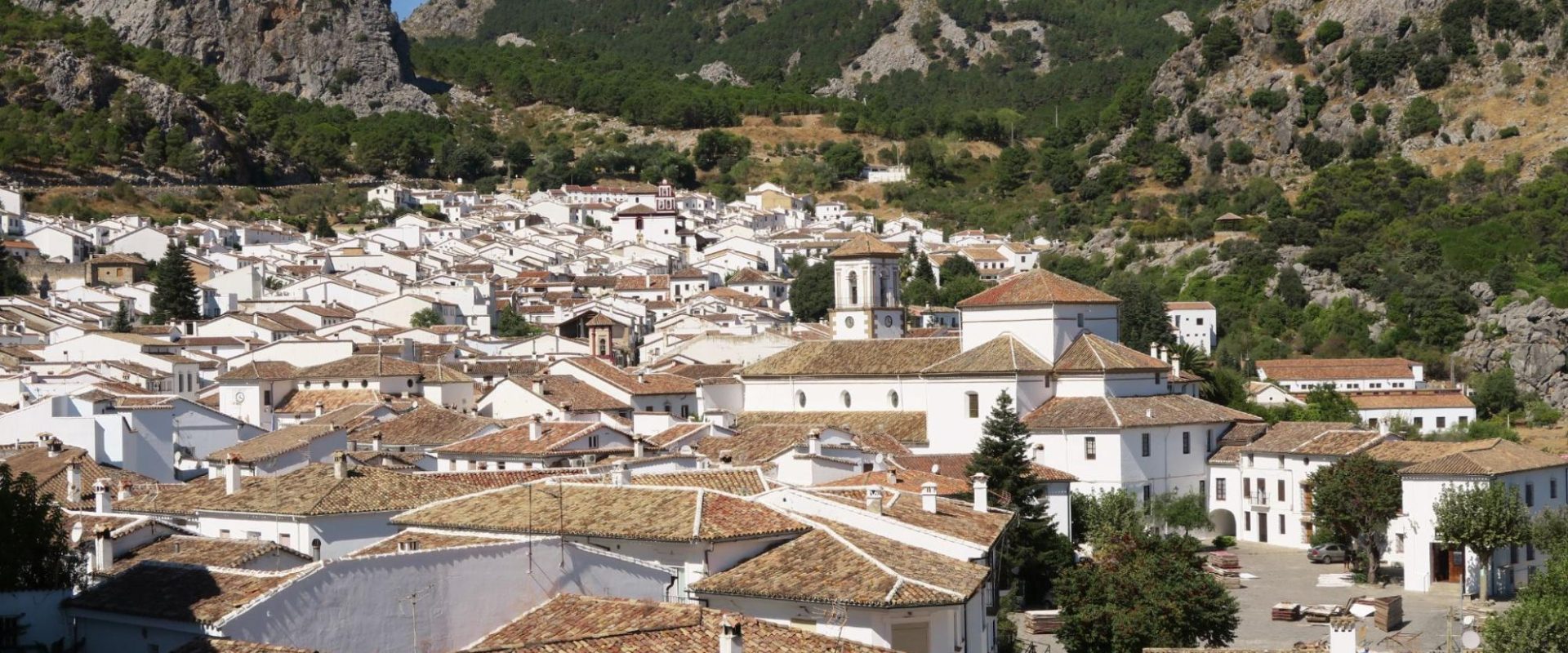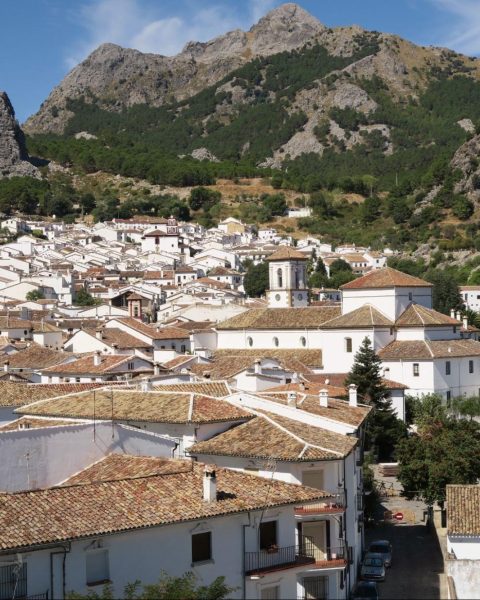Visiting the White Villages or “Pueblos Blancos” of Cádiz is an unforgettable experienceThese charming places conserve the traditional Andaluz style If you are thinking of visiting Cádiz don’t miss out on this list of the 8 most beautiful white villages of Cádiz. Keep reading and we will give you the low down on which they are and what they have to offer.
Which are the white villages of Cádiz?
The white villages are a collection of localities in the province of Cádiz in Andalusia in the south of Spain. These villages are known for their white washed façades and their beautiful architecture. These villages are situated between the coastal hills and the mountains which make them an ideal destination for hiking and out door pursuits. Visitors to these white villages can also enjoy the traditional Spanish cuisine and fine wines of this region as well as exploring picturesque streets and shops. You can’t miss out on this experience!
Why are the Andalus white villages of Cádiz white?
There are a number of reasons why the white villages of Andalusia are white. One of the reasons is the bright Andalus sunshine reflects of the whitewashes surfaces making the the villages appear even more brilliant. Another reason is the cooling effect that reflecting the sunlight has, leaving the interiors much cooler during the hot Andalus climate.Lastly, many of the villages were made with local chalk based rocks which are also white. Whatever the reason the result is a countryside of beautiful whitewashed villages perched on green hillsides with the backdrop of intense blue Andalus skies.
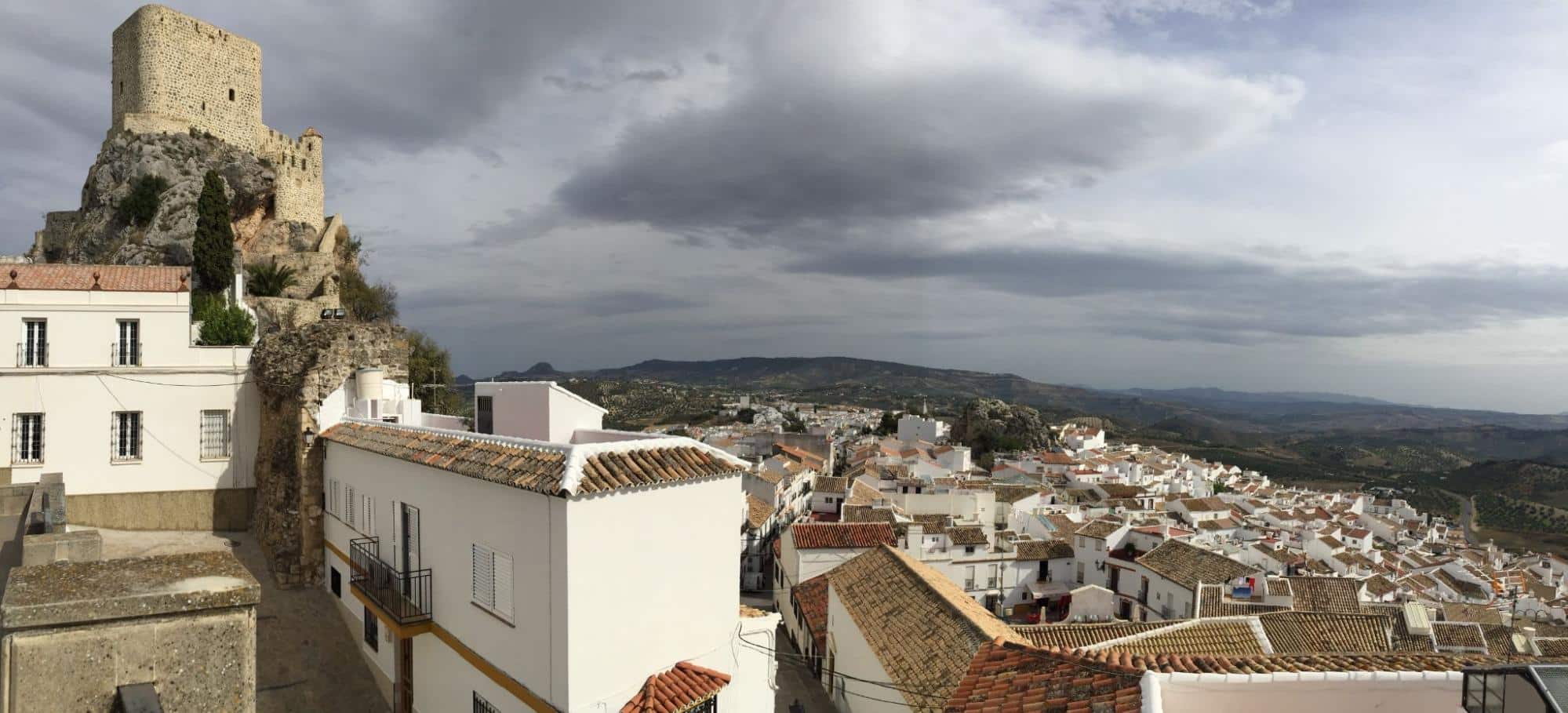
What is there to see on the circuit of white villages in Cádiz?
The route of the white villages in Cádiz is unmissable! Each village has it’s own charm and there is lots do do and see in each of them. So if you are interested in their history or simply want to take in their natural beauty the will not fail to impress.
Which are the most beautiful of the white villages of Cádiz?
There are lots of white villages in the province of Cádiz but among the most impressive are Vejer de la Frontera, Arcos de la Frontera and Grazalema. Each of these villages are located in the province of Cádiz and each has its own style. Vejer de la Frontera is possibly the best known of the three villages. This village is perched atop a hill with views out over the Atlantic Ocean and its white washed houses shine under the sun and are spectacular to behold. Do you know how many white villages there are in Cádiz?
19 white villages of Cádiz
These are the 19 white villages of Cádiz. : Arcos de la Frontera, El Bosque, El Gastor, El Puerto de Santa María, Espera, Grazalema, Jimena de la Frontera, Olvera, Prado del Rey, Puerto Serrano, Ronda, San Fernando, San José del Valle, Setenil de las Bodegas, Tarifa, Torremolinos, Trevelez, Villamartín and Zahara de la Sierra
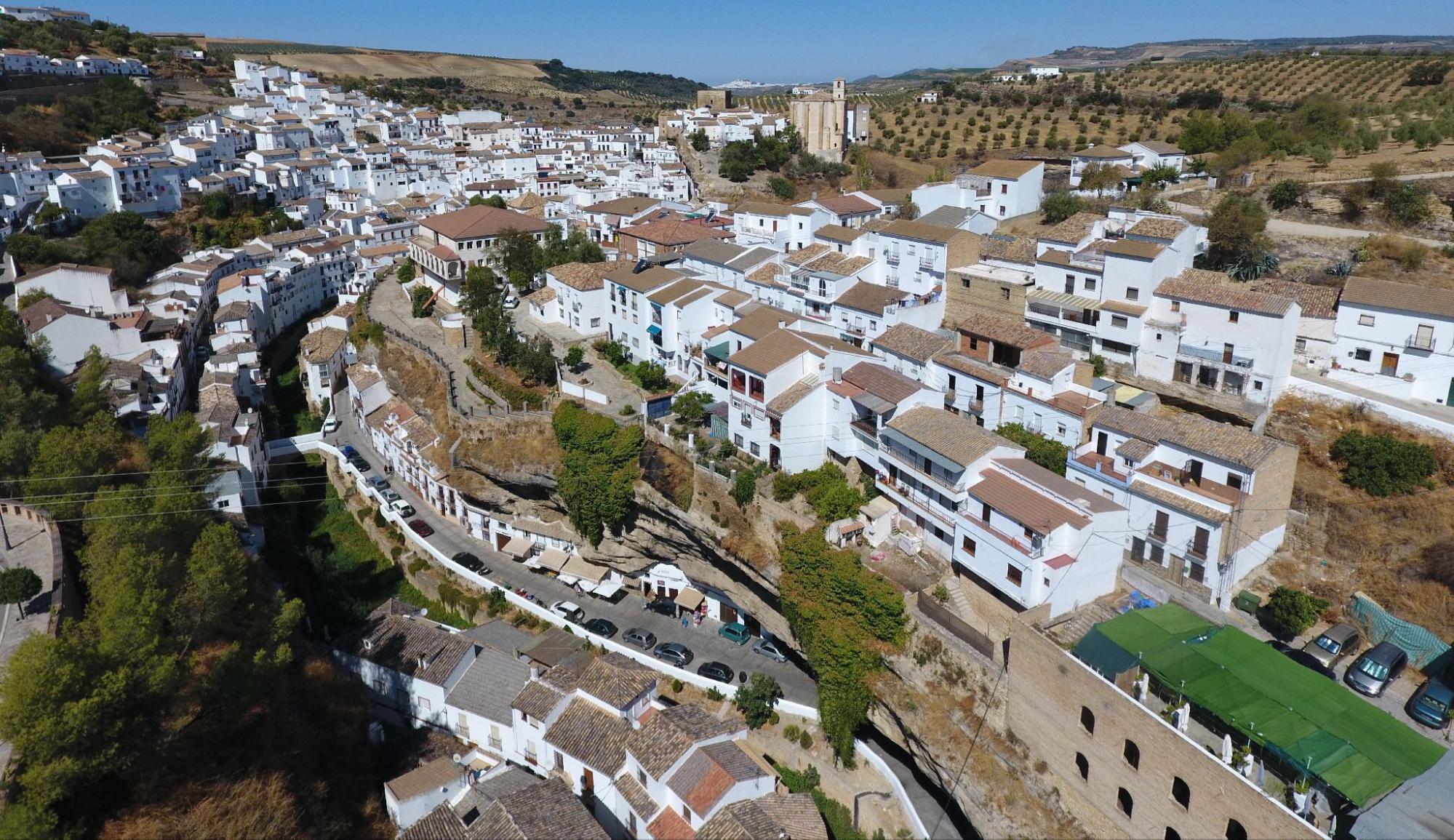
The main route of the 8 white villages of Cádiz
Arcos de la Frontera
Arcos de la Frontera is a village perched up on a cliff top which dominates the river Guadalete and it has impressive views out over the countryside. The village date from the VIII century when it was founded by the Moorish conquerors. In its heyday Arcos was an important frontier town between Christian and Muslim territories and as such was disputed many times. Today it is better known as a tourist destination made popular by its beautiful architecture, amazing views and laid back feel.
Olvera
Olvera is a village in the province of Cádiz. The village is perched on a hill in the Sierra of Cádiz, at an altitude of 538 metres. It has a population of about 3.000 inhabitants. The town is known for its whitewashed houses and its anual fiesta on the 1st of May. In Olvera there are lots of churches and convents, among them the church of Santa María de la Encarnación, dating from the XVI century. Apart from its architecture and festivities Olvera is also renowned as a popular destination for hiking. It is at the start of the green way or vía verde, an old railway line that cuts through the countryside and makes for a great cycle track or walking route.
Setenil de las Bodegas, one of the most unusual of the white villages.
Setenil de las Bodegas is a tiny village in the province of Cádiz. The village is situated down in a gorge in the Sierra Nevada about 100 km from the city of Cádiz. Setenil de las Bodegasis one of the most famous white villages of Andalusia. the village is carved out of the huge rocks of the gorge, sometimes seemingly squashed by giant rocks, a very unusual and picturesque site! The village has a long history dating back to Roman times.
Grazalema, an unmissable stop on the white village route.
Grazalema is one of the most beautiful villages of Cádiz. It is located in the “Parque Natural de la Sierra de Grazalema”, which is one of the largest natural protected areas in Andalusia. The village is surrounded by mountains and is a hikers paradise. It is also well known for its architecture and friendly locals. The local goats cheese is off the scale and the drive up to this village is spectacular! The nearby mountain that overshadows this picturesque village is also about 10m higher than Ben Nevis, the highest mountain in the British isles and they don’t even boast about that……. I would! No really, you have to go here its amazing. It is also home to the Pino sapo, an endemic and highly endangered pine tree found mainly here. On another note one small part of Grazalema is the rainiest part of Spain! No Really not Galicia but here in the province of Cadiz….. ! Quiet amazing really when you think about Andalusia and how dry it is…… The moisture laden air pushes in from the Atlantic and is forced to rise up the side of this mountain and there you go! In the winter it even snows up here and the local coast dwelling citizens of Cádiz drive up here to get there first look at snow!
Benaocaz
Benaocaz is a tiny village situated in a valley at the foot of the sierra of Grazalema. Benaocaz is home to just under 1.000 inhabitants. You have got it it’s white! And stunning quiet and with amazing views….. lots of great hiking into the silence of this majestic Sierra….. definitely worth a visit! Popular for all these reasons as well as for the traditional Spanish architecture and culture and overall whiteness of its houses.
Benaocaz also houses some of the best restaurantes of the area, serving Paella tapas and all sort of wild animals shot on the surrounding hills. You can also find various wineries in the surrounding areas, ideal for enjoying a glass or two of the local wine!
Zahara de la Sierra
Zahara de la Sierra is another white village situated high up on a hill within the Parque Natural de la Sierra de Grazalema, whah makes it a veritable Mecca for lovers of hiking and the natural world. Zahara de la Sierra has a population of about 1.000 inhabitants and is known for the amazing views over the plains below . Visitors to Zahara de la Sierra can enjoy the tiny winding streets of this beautiful village that lead up to the XII century castle at the top of the hill. There is also a beautiful lake just below the village with its own shores where you can go for a swim or even rent a canoe!
Ubrique
Ubrique is a municipality in the province of Cádiz and has a population of about 8.000 habitantes. Ubrique is situated within the boundaries of the Parque Natural de la Sierra de Grazalema, and is at an altitud de 750 metres above sea level. The climate of Ubrique is characterised by cold winters and sizzling summers. Nearby is the Puerto Galiz mountain pass that leads down towards Alcala de los Guazules and is one of the most beautiful roads you will ever go down with majestic sweeping cork oak forests on all sides…… this is really unmissable! This area is the boundary between the province of Cádiz and the province of Málaga……. Stunning. Ubrique is also famous for its leatherwork and has super friendly people!
Villaluenga del Rosario
Villaluenga del Rosario is another tiny white village tucked away in the province of Cádiz just next to the Parque Natural de la Sierra de Grazalema. It has a population of aboute 1.000 inhabitants. The village was founded by the Moorish invaders in the XIII century and its name in Arabic means “village of the roses”
Following the reconquest of Spain this village became part of the Kingdom of Castilla. Nowadays it is a town that snoozes a fine siesta and lives from tourism and goat cheese.
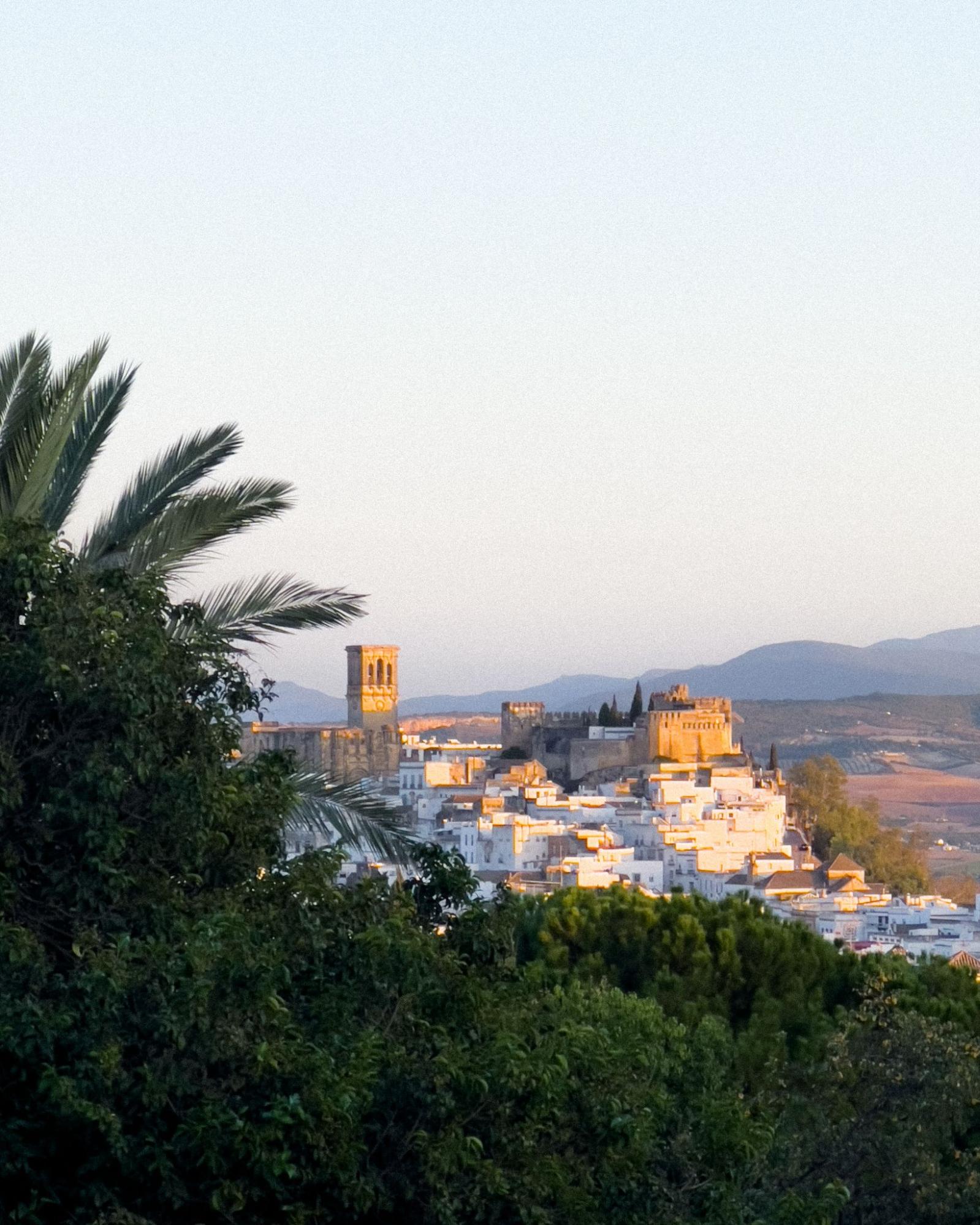
Where to stay in the white villages?
Lots of vistos go to see the white villages for a day trip and end up staying the night.Others plan their trip to spend various days to organise a route taking in various villages. Whichever your plan you could stay up there in the white villages or you could visit them from a base in the city of Cádiz. We recommend that you get to know Casa Caracol and the rooms and services that we offer to our guests and the fun vibes and spirit of the hostel. We await your visit!


